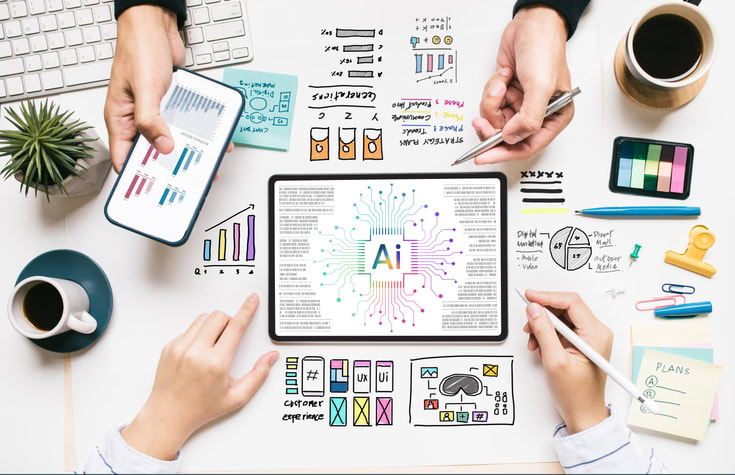We’ve heard of greenwashing—now meet AI-washing, where the hype is bigger than the tech. Government bodies are mobilizing in a war against unchecked AI. The U.S. Securities and Exchange Commission (“SEC”) started cracking down on AI-washing with its recent enforcement actions against companies like Delphia and Global Predictions. Each paid US$225,000 and US$175,000 in civil penalties for inflated AI claims. The EU’s 2024 AI Act sets global standards for AI, focusing on strict requirements for AI systems in high-risk areas like decision-making. Similarly, in 2023, the UN launched an AI Advisory Board that creates global agreements on AI governance.
If world leaders are worried about the risks of unregulated AI, should we all be? For our part, we can wise up on a growing movement exploiting the AI hype. AI-washing occurs because many aren’t aware of AI’s recent capabilities compared to long-standing technologies. Here’s what to know to stay informed.
Understanding AI-Washing: Who’s Driving It?
AI-washing is when you tag an AI label to a product that does not leverage this tech. It’s a misleading tactic that tricks you into believing a product is genuinely innovative. In reality, the product uses none or minimal AI, but nothing pivotal to its core function. It exploits the hype around AI to attract customers or investors and inflate the product’s—and possibly the company’s—monetary value.
We’ve had to adapt to cope with digital scams over the years. Validating online purchases, for example, has become second nature:
- Is the seller legitimate?
- Does the product have positive reviews from other buyers?

Determining whether a product is shrouded in the cloak of AI is more complicated. You need to be familiar with existing technologies and what has only become possible with machine-learning capabilities. We’ve faced similar conundrums in the past.
‘Big Data’ was the buzzword of the mid-2010s when many companies claimed to be harnessing big data analytics. ‘Big’ is relative and can be misleading. The largest coffee in the US is 31 ounces, whereas Italy’s is 12 ounces (nicknamed the Americano for being bigger than the norm). An oversized coffee in Italy is a small American one. As such, the challenge of defining big data in analytics ensued. In many cases, companies merely used basic data processing techniques without the scale or complexity implied by the term. We know now that big data needs:
- To be measured in terabytes, petabytes, or larger (You need approximately 10 billion rows of data in Excel to reach one terabyte)
- To be generated at high speed and, as such, needs to be processed in (near) real-time
- To come from a wide range of sources, like social media interactions (posts, likes, shares), IoT sensor data (smart meters and wearables) etc.
With these three characteristics, accurately deciphering the data is much more complex than analyzing a smaller, static data set. Firms can legitimately solicit higher costs for that added complexity. We need a similar categorization for AI to make sure we pay for what companies promise, not for ghost AI services. We’ll get to some use cases for identifying AI-washing in a moment.
Knowing who is inflating claims will also help you avoid AI-washing. There are three main culprits behind it. First up, marketing strategies can oversell AI capabilities. A creative marketing team must make a product stand out in a saturated market, but sometimes, they need reigning in. The product team should closely monitor the marketing rhetoric for AI. We believe marketing teams should have some understanding of tech, but not all software companies have this mindset.

Media coverage and sensationalism create unrealistic expectations. Articles about AI being used to detect and catch criminals through facial recognition, for instance, can lead people to believe that AI is flawless in these tasks. However, most of these systems are prone to bias and errors, which the headlines rarely address. This creates an inflated sense of AI’s accuracy and reliability. Headlines about AI replacing entire industries spurred panic. Many systems were not even robust enough for such disruption. Reading news stating AI is taking over is bound to make us more susceptible to companies’ AI-washing claims. In reality, we’ve realized that humans need to upskill to make AI any use. We’re dependent on one another, not in competition.
Then there are companies themselves, where chief executives attract investors by claiming to use AI.Similar cases in the past include the rise of NFTs in the fashion world, which saw brands like Louis Vuitton and Dolce & Gabbana sell digital items, but the long-term value of these items remains questionable. Likewise, the founder of the cryptocurrency exchange FTX, Bankman-Fried, was charged with fraud in late 2022 after FTX collapsed, leading to billions of dollars in losses for investors. He was accused of misleading investors by inflating the company’s financial health. Tech deception can happen on a large scale from seemingly truthful sources and it’s happening with AI.
What Are the Risks if AI-Washing Continues?
Why is it important to call out AI-washing? Apart from ripping off customers and investors, there are more sinister retributions. AI-washing will impact innovation. It diverts attention and investment away from truly innovative solutions, slowing the overall progress in AI.
In the medical field, Theranos made groundbreaking claims around its blood-testing technology. Theranos claimed it could run hundreds of diagnostic tests using just a few drops of blood from a finger prick, eliminating the need for large blood samples. After raising $700m from investors and 12 years of research, the claims were proven fraudulent. If similar AI-washing claims occur, masses of investment money can be thrown down the drain.

Firms must critically evaluate whether their AI investments truly meet their needs or if funds would be better spent on more innovative solutions. For example, if ChatGPT is merely functioning as an advanced Google Search within your company, it may be wasting resources on basic queries. Consider whether investing in 100 ChatGPT licenses is worthwhile, or if a specialized NLP team developing a customized language model would offer greater value. Appointing a Chief AI Officer could help decide where money is best invested in AI.
Finally, if AI-washed products make decisions affecting people’s lives, like in hiring or law enforcement, the lack of transparency and accuracy can raise accountability and fairness concerns. What if a company relied on a rule-based algorithm marketed as AI-powered for hiring? However, that tool only uses basic keyword matching rather than authentic machine learning. Candidates with unconventional resumes or gaps could be unfairly filtered out. Without transparency about the AI’s capabilities, organizations may unknowingly rely on a flawed tool. Addressing biases or errors becomes challenging if the AI component is overstated or misrepresented. Tech firms, governments, and industry regulators all have a part to play in ensuring AI transparency.
How to Spot Vague AI Claims
Here are three products that utilize AI compared to similar ones that do not use AI as advertised. Comparing the two products side-by-side can increase your AI literacy and help you spot AI-washing in the wild. Each one illustrates an area AI promises to revolutionize: personalization, predictive modeling, and real-time data statistics.
1. AI vs AI-washing in personalization:
- An app that helps diabetes patients find safe food at the right time. It tracks the user’s past movements, previous restaurant visits (including the days/ price range), and health stats (current insulin levels) to suggest safe restaurants and food menu items for that specific user.
AI processes raw data from the user’s past behavior, health stats, and location. It uses machine learning algorithms like collaborative filtering and classification models to identify dietary patterns and preferences. It applies real-time data processing and a constraint-based recommendation engine to cross-check food options. This ensures suggestions align with the user’s current insulin levels for safe and personalized recommendations.
- Another app makes the same claim but only uses current location data and generic dietary guidelines. It doesn’t analyze real-time health stats, user food preferences, or adapting to current insulin levels. The personalization is minimal and certainly not AI-driven.

2. AI vs AI-washing in predictions:
- A personal finance app predicts future spending trends by analyzing your transaction history, large purchases (e.g., buying a bigger house, so will now need furniture), and external economic indicators (e.g., news on a drought in Brazil that will raise coffee prices). It offers tailored financial advice and budget adjustments, taking into account predicted grocery cost increases and upcoming purchases.
Time series forecasting models, such as ARIMA or LSTM, are applied to predict future price fluctuations based on historical data. The system cross-references large purchases, like a new home, with predictions to anticipate related expenses, such as furniture. It dynamically adjusts the user’s budget, offering real-time tailored financial advice.
- Another company claims its finance app predicts spending trends. Howevever, it merely categorizes past expenses without considering current financial data or external factors. Its advice is based on simple rules, not true predictive analytics, and won’t warn users of necessary, upcoming budget adjustments.
3. AI vs AI-washing in real-time data analysis:
- A company tracks package delivery estimates via real-time traffic and climate conditions. Using predictive stats, the AI can recalculate the package’s arrival time. This solution is expensive because it needs to integrate with IoT databases that report current traffic and weather conditions.
Time series forecasting and regression analysis are applied to adjust the estimated arrival time dynamically. The system requires significant computational resources due to the need for real-time data processing and integration with multiple IoT sources, making it an expensive solution. The AI’s ability to process and analyze large-scale, time-sensitive data ensures more accurate delivery estimates.
- Another company relies solely on static data, such as average delivery times for routes, without incorporating real-time traffic or weather data. This limits accurate predictive modeling. It estimates delivery times based on historical data, so if an unexpected event like a tornado hits the route, it will delay the delivery. Still, the system won’t reflect the change.
You can conduct similar comparisons of products on the market. Increasing consumer awareness of genuine AI capabilities will make ‘AI-washing’ less effective and may even eliminate it.
The Future of AI Is in Your Hands
AI-washing misleads consumers and investors and hampers true innovation by diverting resources away from meaningful advancements. To combat this, raising AI literacy and increasing consumer awareness, alongside industry regulation, is essential to ensure transparency. The consequences of unchecked AI-washing could lead to unfair or incorrect decision-making, further stifling technological progress. By promoting accountability and supporting responsible AI development, we can safeguard the future of AI and ensure it benefits society as a whole. Let’s save the future of AI!






